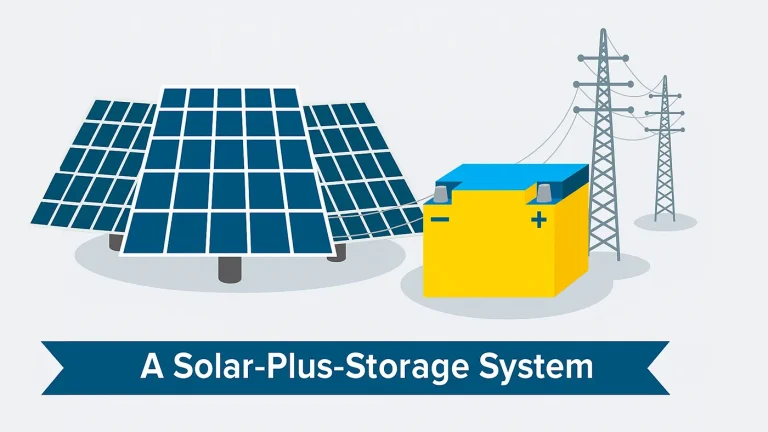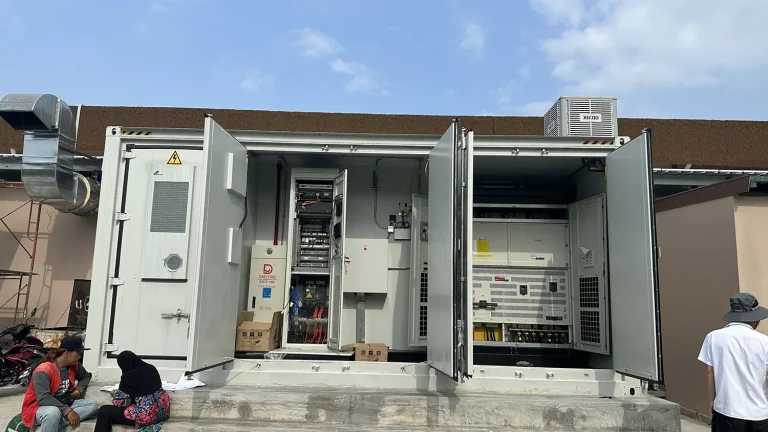3 November, 2025
Power Conversion System (PCS) vs Inverter: What’s the Real Difference?
When building a solar PV system, energy storage project, or any power system involving DC – AC conversion, one fundamental question often arises: Do I need a Power Conversion System (PCS) or an Inverter?
Although both handle power conversion, their functions, applications, and roles within the system differ significantly. Understanding these distinctions is essential to optimize energy performance, improve efficiency, and maximize ROI.
This article explores the definitions, key differences, and working principles of PCS and inverters, and offers a practical guide to help you choose the right solution for your energy system.
What is a PCS?
A PCS is the core component of an energy storage system, responsible for bidirectional power conversion and management between DC and AC.
It can:
- Convert DC from batteries into AC power for the grid or local loads.
- Rectify AC from the grid into DC to charge batteries.
- Precisely control battery charging and discharging for efficient energy storage and release.
Therefore, when an energy storage system interacts with the grid, the PCS becomes an indispensable component. Beyond conversion, it also supports grid frequency regulation, voltage stabilization, and intelligent energy optimization.
Main Applications
PCS is widely used in energy storage systems (ESS), microgrids, EV charging stations, and utility-scale energy storage applications.
For example, GODE’s DQ1907 Energy Storage System integrates a 100 kW PCS expandable to MW level, widely used in backup power, smart peak-shaving, and industrial energy storage projects.
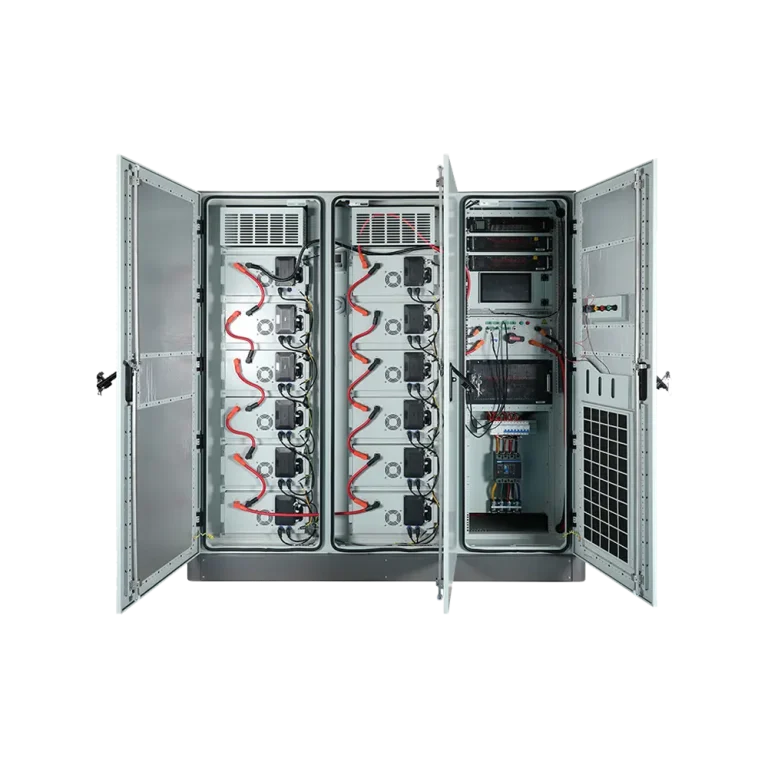
What is an Inverter?
An inverter is a device that converts DC power into AC power, commonly used in solar PV generation and UPS systems.
It typically performs one-way power conversion and does not support battery charging or bidirectional grid interaction.
Inverters are mainly used in grid-tied solar PV systems, converting DC from solar panels into AC for home or industrial use, and feeding surplus power back to the grid.
Let’s take a look at what an inverter looks like.
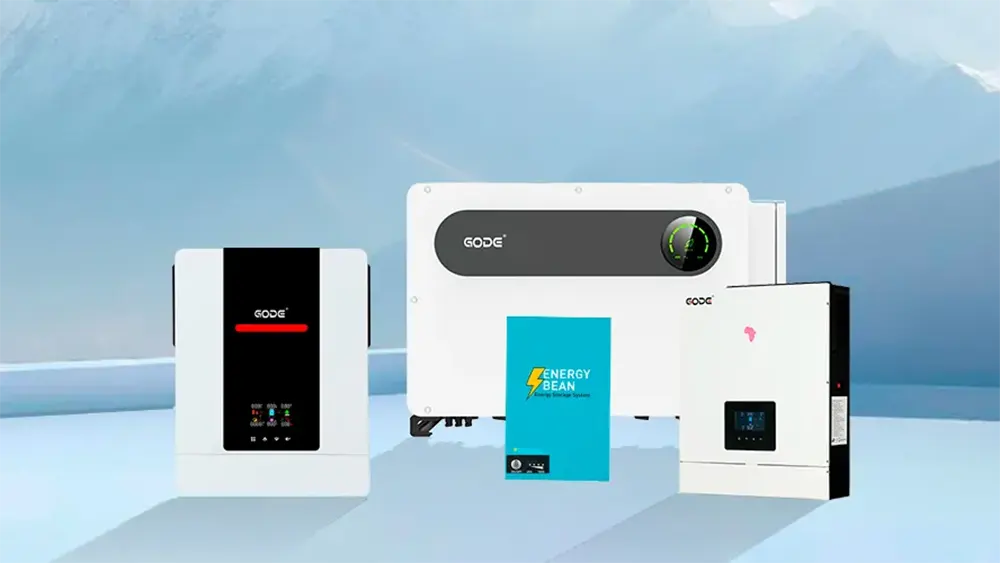
Key Differences Between PCS and Inverters
While both perform power conversion, they differ in functionality, control sophistication, and system role.
Functional Difference
- PCS: Supports bidirectional power flow (AC↔DC) and advanced grid services.
- Inverter: Supports unidirectional conversion (DC→AC) only.
Application Scenarios
- PCS: Used in energy storage systems, microgrids, and EV charging infrastructure.
- Inverter: Used in solar grid-connected or UPS systems.
Cost and Structure
- PCS: More complex, includes controllers and safety modules, about 20% of total ESS cost.
- Inverter: Simpler and more cost-effective for single-direction use cases.
| Comparison Dimensions | Inverter | PCS |
| Energy Flow | One-way (DC → AC) | Bidirectional (AC ↔ DC) |
| Main Application | Solar PV grid-tied systems | Energy storage systems and hybrid microgrids |
| Battery Charge/Discharge Function | Not supported | Supported |
| Grid Support Capability | Basic synchronization only | Advanced features such as frequency and voltage regulation |
| System Complexity & Cost | Simple structure, lower cost | More complex design, higher cost |
| EMS Communication | Optional | Required – works with EMS |
| Ideal Application | Pure solar PV systems | Energy storage and hybrid energy systems |
How PCS and Inverters Work Together
Power Conversion Coordination
In a solar-plus-storage system, the inverter converts solar DC into AC power, while the PCS manages further regulation based on grid and battery conditions. The inverter supports the PCS to achieve more advanced energy conversion control.
Charge–Discharge Coordination
When the PCS detects grid demand, it controls the inverter to discharge batteries efficiently, ensuring high-quality and stable AC output.
Grid Interaction Coordination
In grid-tied mode, the inverter and PCS synchronize with the grid; in off-grid mode, the inverter supplies local loads while the PCS manages battery and inverter power flow, ensuring continuous operation.
Which One Should You Choose?
Choose an Inverter
If your system only needs to convert solar energy for load or grid use, an inverter alone is sufficient.
Choose a PCS
If you need energy storage, frequency regulation, or peak shaving, a PCS is essential.
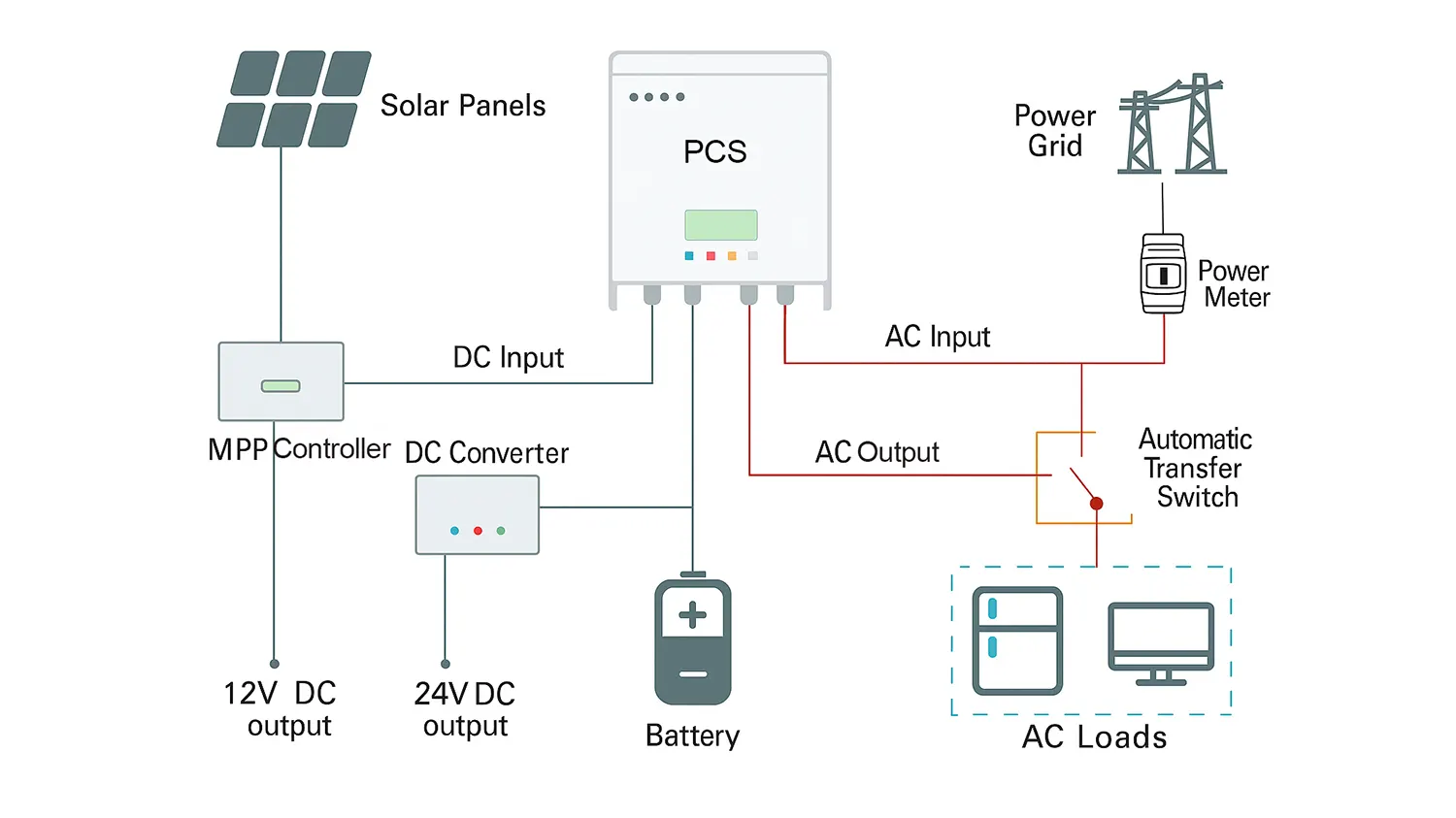
Using PCS and Inverter Together
In large hybrid systems, inverters handle PV generation while PCS units manage storage and grid support — delivering maximum efficiency and flexibility.
Choose a Hybrid Inverter
With the advancement of technology, the Hybrid Inverter has emerged as an innovative solution.
It combines the functions of a PV inverter and a Power Conversion System (PCS) into a single device. It can manage DC input from solar panels while also controlling battery charge and discharge, supporting both on-grid and off-grid modes of operation.
Hybrid inverter systems feature a simpler architecture, lower cost, and easier installation, making them ideal for residential, commercial, and industrial applications.
Conclusion
Whether in solar generation, energy storage, or microgrid applications, selecting the right equipment is the key to achieving efficient and secure system operation.
GODE is committed to delivering comprehensive solutions—from PV inverters to energy storage converters—empowering businesses and households to build a cleaner, smarter, and more reliable energy future.
PCS and Inverter FAQs
share






